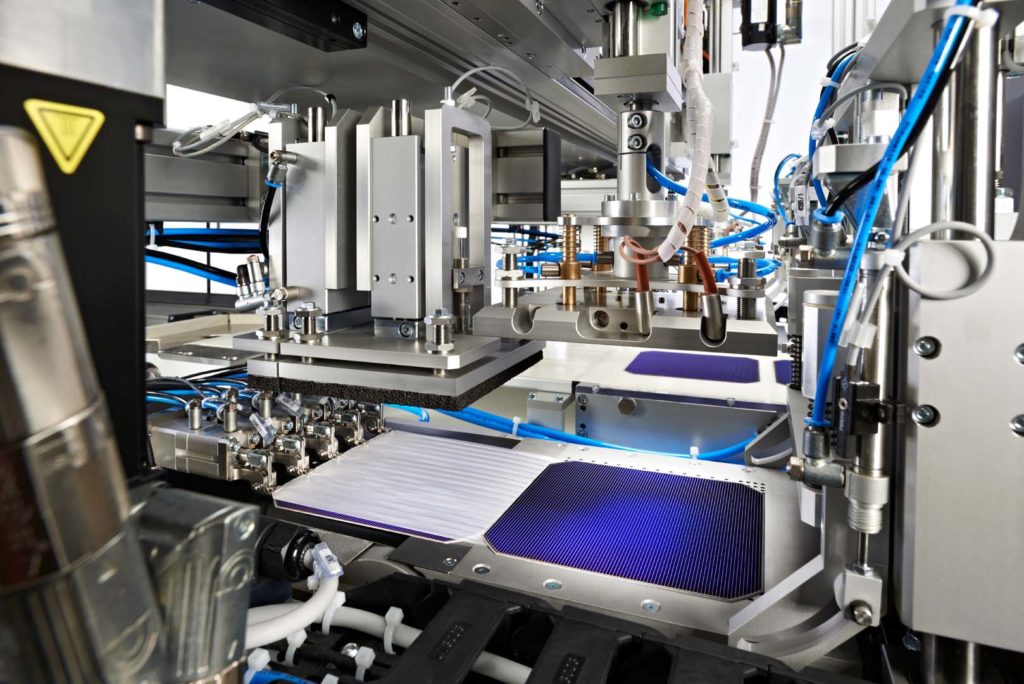
While solar deployment throughout Europe is expected to soar, can the same be said for manufacturing on the continent? As part of this week’s special feature on European solar, Liam Stoker assesses the potential for solar manufacturing to return to Europe.
While solar deployment throughout Europe is expected to soar, can the same be said for manufacturing on the continent? As part of this week’s special feature on European solar, Liam Stoker assesses the potential for solar manufacturing to return to Europe.
Unlock unlimited access for 12 whole months of distinctive global analysis
Photovoltaics International is now included.
- Regular insight and analysis of the industry’s biggest developments
- In-depth interviews with the industry’s leading figures
- Unlimited digital access to the PV Tech Power journal catalogue
- Unlimited digital access to the Photovoltaics International journal catalogue
- Access to more than 1,000 technical papers
- Discounts on Solar Media’s portfolio of events, in-person and virtual
Since SolarWorld’s collapse in 2018, Europe’s solar manufacturing scene has mulled its place in the global value chain. While Europe houses some of the world’s leading research institutes, has unquestionably some of the best technology development centres and has a plethora of academic resource at its disposal, it has not been able to compete with the volume and scale of manufacturing on offer in Asia. To date, modules from China account to more than 90% of those sold each year.
But could that be about to change? Efforts to bring about a solar manufacturing renaissance in Europe have gathered pace, spurred on by concerns over supply chain logistics – Frank Niendorf, general manager for Europe at JinkoSolar, notes that the average cost of shipping containers has soared in recent months – the carbon footprint of manufacturing and shipping solar panels halfway across the world and a desire to once again have skin in the game in one of the world’s most strategic manufacturing industries.
In Early May, the European Commission published its eagerly anticipated revised industrial strategy, a document updated a year after the onset of the COVID-19 pandemic principally because the crisis had shifted much of the landscape it was originally drawn up on. The strategy concludes that European industry has been “exposed to new vulnerabilities and older dependencies” while also illustrating the “need for more speed in the transition towards a cleaner, more digital, and more resilient economic and industrial model”. Its solution has been to identify 14 strategic industries and tailor support for them, one of which is domestic renewables manufacturing.
Walburga Hemetsberger, CEO at SolarPower Europe, lauded the inclusion as a “much-awaited signal to reignite solar manufacturing in Europe and enable the EU to take the lead in the next generation of cutting-edge solar technologies.”
Efforts are already afoot, of course. Meyer Burger has recently completed its pivot away from tool and equipment provider to a pure solar cell and is to shortly market a range of heterojunction solar modules in Europe and the US. Its initial volume of 400MW is expected to ramp up to 1.4GW by 2023.
That kind of production volume will not, however, be sufficient to compete with the continent’s international counterparts, and is a “drop in the ocean” compared to what’s necessary, Meyer Burger CEO Dr Gunter Erfurt says. Speaking at SolarPower Europe’s SolarPower Summit in mid-May, those involved in Europe’s fledgling manufacturing renaissance noted that it would require up to €7 billion (US$8.5 billion) of investment to hit the kind of scale to be globally competitive – around 20GW. This takes into consideration requirements across the value chain, right the way from polysilicon production, to ingot/wafering, to cell production and module assembly. While Europe’s supply of polysilicon could be catered for domestically from existing facilities owned by Wacker Chemie, according to the company’s vice president of marketing, sales and application engineering Christian Westermeier, the rest of these critical cogs in the system are lacking in Europe.
Political support
Financial clout will therefore be essential to the success of Europe’s manufacturing renaissance. Financiers will need to be less risk averse, but the business model could also be handed considerable help through political interventions.
Niendorf says that while the idea of localised supply chains is growing in appeal once again, it remains difficult to see Europe competing with Chinese manufacturers in the immediate future. “Just purely looking at the economic viability of the whole value chain of manufacturing cost… [Chinese manufacturers] have completely different economies of scale, compared to what might be possible in Europe,” he says. “It will be difficult to reach the manufacturing cost, no matter how much automation of the production process along the value chain you have, it will still be difficult to keep up with the costs that have been achieved in China.”
What Europe will continue to lack, Niendorf says, is the “whole industry cluster” that surrounds solar module manufacturing. “It’s not just wafers, cells and modules, there are so many more components,” he says, stressing the importance of other materials such as glass in the process. “We would need that in Europe as well to make it competitive, because if you have to fly in either solar glass or certain components from other regions in the world, automatically, that drives up the cost.”
One potential lever to incentivise the support of a domestic solar manufacturing industry in Europe is the much-mooted addition of carbon footprint requirements on modules. Policy details are being drawn up and are expected to be outlined this summer by the European Commission, but it could prove to be a useful lever in making domestically-manufactured solar products more competitive on price. In a sector as price sensitive as power generation, Europe’s solar sector will need all the policy help it can get to compete with China’s considerable clout.







